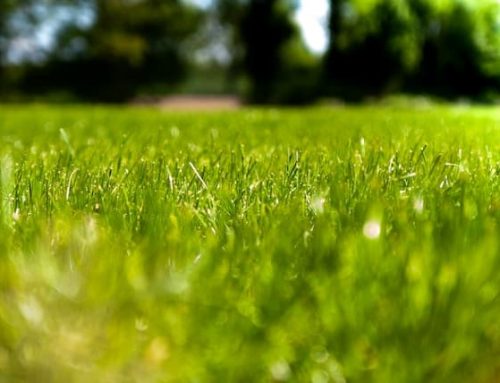Top 10 Native Tropical Plants
Bali’s tropical climate provides an ideal environment for lush, green gardens filled with colorful and exotic plants. By incorporating native tropical plants into your garden, you can create a serene, tropical paradise right in your backyard. In this post, we will be exploring the top 10 native tropical plants to transform your garden into an oasis.
1. Frangipani
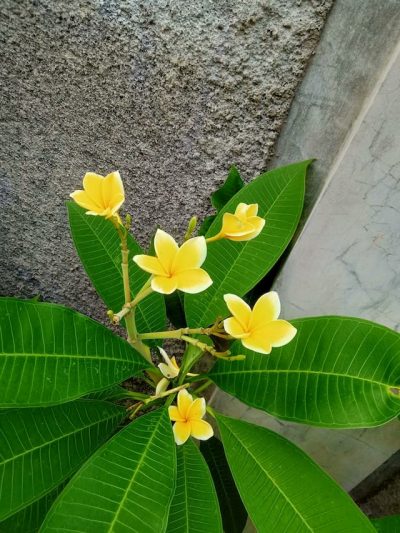 Plumeria, commonly known as frangipani, is a popular and beloved tropical plant native to Central and South America, Mexico, and the Caribbean. It is a low-maintenance decorative shrub that can add color, beauty, and fragrance to any garden. It is particularly popular in Bali where it is valued for its stunning flowers and sweet fragrance.
Plumeria, commonly known as frangipani, is a popular and beloved tropical plant native to Central and South America, Mexico, and the Caribbean. It is a low-maintenance decorative shrub that can add color, beauty, and fragrance to any garden. It is particularly popular in Bali where it is valued for its stunning flowers and sweet fragrance.
The plumeria plant blooms in shades of white, yellow, pink, red, and orange. Its fragrant flowers are 2-3 inches long and have a beautiful, delicate, and waxy texture. The flowers bloom in clusters on the tips of thick branches and have a sweet aroma that is particularly strong at night. This native tropical plant is a hardy, drought-tolerant, and low-maintenance plant, making it ideal for your garden in Bali
Plumeria is valued for its beauty, fragrance, and symbolism. In Hindu and Buddhist cultures, it is considered a sacred flower that represents love, devotion, and immortality. It is commonly used in spiritual and religious ceremonies, and the flowers are used as offerings to deities, ancestors, and spirits. In addition, its juice and sap are used for medicinal purposes to treat ailments such as fever, headaches, and inflammation. Overall, plumeria is versatile and one of our favorite native tropical plants that is an excellent choice for creating a beautiful tropical paradise in your garden.
2. Heliconia
![]() Heliconia is a tropical perennial plant that originates from South and Central America but is now widely cultivated in Bali and other tropical regions. The plant is popular among gardeners due to its bold and striking colors, including shades of yellow, red, and orange, which can completely transform any garden into a tropical paradise.
Heliconia is a tropical perennial plant that originates from South and Central America but is now widely cultivated in Bali and other tropical regions. The plant is popular among gardeners due to its bold and striking colors, including shades of yellow, red, and orange, which can completely transform any garden into a tropical paradise.
Besides its vibrant colors, Heliconia is most known for its large, dramatic flowers that can grow up to three feet long. The flowers resemble the shape of a bird and are long-lasting, making the plant an attractive addition to any garden. The plant is also easy to care for as it requires moderate sunlight and watering, which makes it a practical choice even for those with a busy lifestyle.
Heliconia is particularly popular in Bali, where it is used extensively in the Balinese culture for various purposes such as floral arrangements, traditional ceremonies, and home decorations. Heliconia’s bright colors and unique shapes make it a popular ornamental plant. It is believed that the plant also possesses medicinal properties and has been used to treat various ailments such as fever, headaches, and digestive problems. Overall, Heliconia is an excellent choice for gardeners looking to add a touch of the tropics to their garden, as it is a low-maintenance yet stunning plant that is sure to impress anyone who sees it.
3. Bird of Paradise
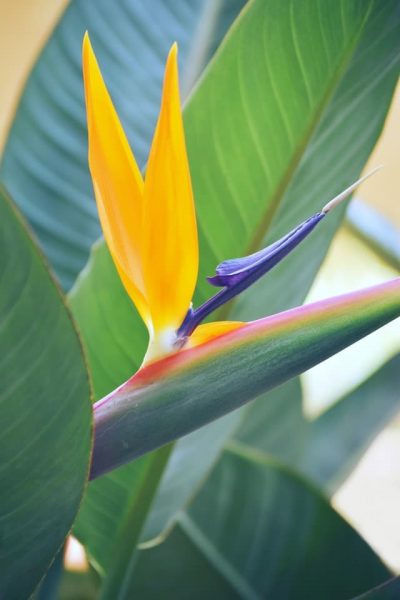 Bird of Paradise is one of the most stunning native tropical plants that stand out in any garden thanks to its unique, exotic, and dramatic flowers that resemble birds in flight. It is native to South Africa and is a popular plant worldwide, especially in Bali, thanks to the beauty and presence it brings to landscape design. The plant is well-suited to tropical and subtropical areas and requires full sunlight to thrive.
Bird of Paradise is one of the most stunning native tropical plants that stand out in any garden thanks to its unique, exotic, and dramatic flowers that resemble birds in flight. It is native to South Africa and is a popular plant worldwide, especially in Bali, thanks to the beauty and presence it brings to landscape design. The plant is well-suited to tropical and subtropical areas and requires full sunlight to thrive.
The Bird of Paradise plant can grow up to six feet tall with a spread of up to three feet, making it an excellent choice for creating a focal point in any garden. The plant produces vibrant flowers with bright orange, blue, and yellow hues, which can appear in spring and summer, giving the garden an eye-catching tropical paradise feel. It’s a low-maintenance plant that is relatively easy to grow and care for.
The Bird of Paradise prefers well-draining soil, and a pH between 6.0 and 7.0 is optimal. The plant is drought-tolerant but requires regular watering, particularly during dry spells. Fertilization should be done regularly during the growing season to encourage optimal growth. The Bird of Paradise benefits from pruning, which helps it retain its shape and encourages the production of new flowers. Overall, the Bird of Paradise is an attractive and unique tropical plant that adds exoticism and vibrancy to any garden or indoor space.
4. Orchid:
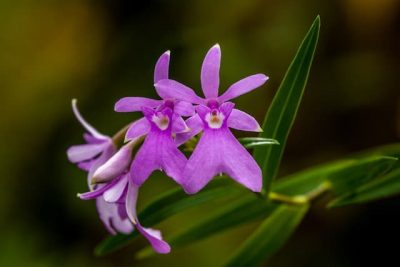 Orchids are diverse and elegant tropical plant that adds sophistication and exoticism to gardens. They come in a variety of shapes, sizes, and colors, making them versatile plants to work with. Orchids require filtered sunlight, as they cannot tolerate direct sunlight, and the soil should be moist but not waterlogged. Orchids are susceptible to root rot, so proper drainage is essential. They are prone to under and over-watering, so applying a regular watering schedule is key to their care.
Orchids are diverse and elegant tropical plant that adds sophistication and exoticism to gardens. They come in a variety of shapes, sizes, and colors, making them versatile plants to work with. Orchids require filtered sunlight, as they cannot tolerate direct sunlight, and the soil should be moist but not waterlogged. Orchids are susceptible to root rot, so proper drainage is essential. They are prone to under and over-watering, so applying a regular watering schedule is key to their care.
Orchids are rewarding plants to grow because they produce an exquisite appearance with their unique blooms, which can last for weeks on end. They respond positively to fertilizer and will typically grow and thrive quickly in their ideal growing conditions. There are over 28,000 species of Orchids, each with subtle differences in their requirements, making them quite versatile for different types of indoor and outdoor settings. Orchids are not high-maintenance plants, but newcomers to the plant may find them tricky to grow due to their sensitive roots.
Orchids have gained popularity among garden enthusiasts in recent years as they are a symbol of luxury, rare beauty, and longevity. This mystique surrounding Orchids has led to their adoption as a plant that conveys emotions such as love or appreciation. Orchids, whether you favor species or hybrids, can occupy various containers such as terrariums or pots, making them a practical indoor plant. They can thrive in a variety of growing media, such as wood chips or bark, but the important rule is to avoid having the plant sit in water because standing water and poor airflow can result in root rot. Overall, Orchids are a rewarding but delicate plant to grow, as they produce stunning blooms and impart elegance to any place they occupy.
5. Arecaceae (Palm trees):
 Arecaceae, or Palm trees, is a plant family consisting of over 2,000 species worldwide, making them a popular ornamental plant in a wide variety of gardening settings. Palm trees are attractive due to their elegance and presence, making them a popular choice for landscaping designs. These plants are typically low-maintenance and easy to care for, and they come in various types, including dwarf, medium, and large, ranging from under 10 feet tall to over 60 feet tall.
Arecaceae, or Palm trees, is a plant family consisting of over 2,000 species worldwide, making them a popular ornamental plant in a wide variety of gardening settings. Palm trees are attractive due to their elegance and presence, making them a popular choice for landscaping designs. These plants are typically low-maintenance and easy to care for, and they come in various types, including dwarf, medium, and large, ranging from under 10 feet tall to over 60 feet tall.
Palm trees are widely grown in tropical and subtropical regions and require full sunlight to promote healthy and optimal growth. They also prefer well-draining soil and regular watering, especially during warmer weather, to ensure the soil remains moist without being soggy. Palm trees are sensitive to overwatering, so applying a regular watering schedule is essential. They typically do not need frequent pruning, but significant dead leaves or flowers should be removed promptly.
Palm trees provide an aesthetic appeal that can complement any landscape design. They are used as ornamental plants in gardens, parks, resorts, and other outdoor spaces. They also have significant cultural relevance in many parts of the world, where they are used in festivals, traditions, and ceremonies. Whether it’s a towering Canary Island date palm, a majestic Palm tree that provides shade, or a dwarf palm that looks great in a container, Palm trees are versatile plants that can add elegance and sophistication to any landscape.
6. Ginger:
Ginger is a tropical plant commonly grown for both medicinal and culinary purposes. This plant is widely utilized due to its aromatic and unique flavor component, making it an essential ingredient in many dishes, drinks, and herbal remedies. Ginger is a perfect addition to any garden, providing an attractive tropical feathery plant with bright green foliage and fragrant flowers.
Ginger requires well-draining soil and prefers a partially shaded area to avoid direct sunlight. Ginger is sensitive to overwatering; it prefers moderately moist soil and should only be watered when necessary. Once established, Ginger is a low-maintenance plant, but it requires regular fertilization to promote healthy growth. It’s common practice to either completely harvest the ginger bulbs yearly or let the plant propagate to produce new growth.
Ginger has many medicinal properties, and it’s widely used as a remedy for stomachaches, nausea, fever, and sore throat symptoms. Ginger’s unique aroma also makes it a popular plant to add to teas, juices, or spices. In summary, Ginger is an excellent plant for use in various culinary purposes or as a medicinal herb, and it’s easy to incorporate into a tropical garden design.
7. Bougainvillea:
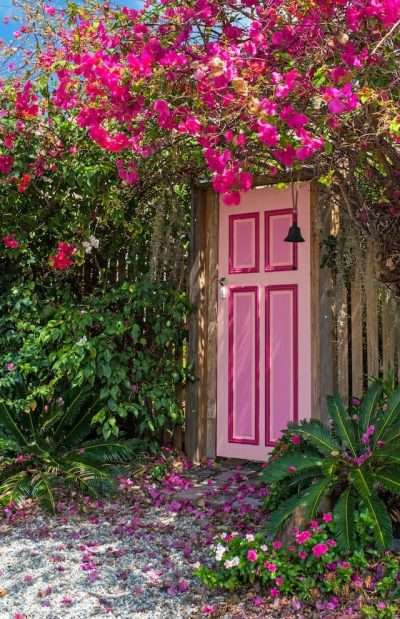 Bougainvillea is a popular and colorful tropical plant characterized by bright clusters of flowers that bloom in a range of colors, including pink, purple, red, and orange. The plant can be trained to grow as a shrub or branches can be left trailing to create attractive cascading hedges. Bougainvillea prefers full sunlight but can tolerate some shade. The plant can be grown successfully in both outdoor and indoor settings.
Bougainvillea is a popular and colorful tropical plant characterized by bright clusters of flowers that bloom in a range of colors, including pink, purple, red, and orange. The plant can be trained to grow as a shrub or branches can be left trailing to create attractive cascading hedges. Bougainvillea prefers full sunlight but can tolerate some shade. The plant can be grown successfully in both outdoor and indoor settings.
Bougainvillea requires regular watering, especially during the active growth season, and benefits from regular fertilization to promote blooming. The plant is low maintenance but does require some pruning to encourage new growth and maintain its shape. It is an excellent choice for gardeners looking to add a splash of vibrant color to their garden or landscape design.
Bougainvillea provides considerable benefits to the environment, contributing to regenerating the soil and improving the air quality around it. It is considered an invasive species in some regions, but their quick growth, low maintenance, and stunning visuals make them a common feature in many gardens globally. Bougainvillea also has significant folklore surrounding it, with many native cultures attributing them with medicinal, cultural, and spiritual significance. Overall, Bougainvillea is an attractive and versatile plant that adds color and beauty to any garden.
8. Bromeliads:
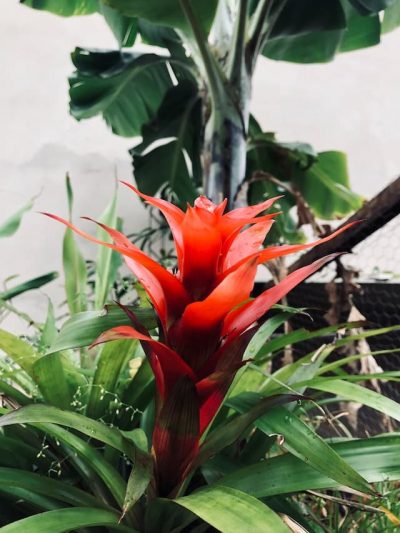 Bromeliads are exotic tropical plants that come in a range of shapes, sizes, and colors, with some species producing colorful leaves that create stunning rosettes. The Bromeliads can grow in a variety of living settings, such as trees, logs, or pots, making them an exciting and versatile plant to work with. They are highly prized for their decorative leaves and unique flowers.
Bromeliads are exotic tropical plants that come in a range of shapes, sizes, and colors, with some species producing colorful leaves that create stunning rosettes. The Bromeliads can grow in a variety of living settings, such as trees, logs, or pots, making them an exciting and versatile plant to work with. They are highly prized for their decorative leaves and unique flowers.
Bromeliads require low to indirect sunlight and regular misting to avoid drying out. They don’t require a lot of water, and soil may need to be allowed to dry between watering to avoid root rot. Fertilization can be necessary seasonally to encourage healthy growth. It’s essential to remove any dead leaves from the plant to avoid pest infestation and promote new growth.
Bromeliads are utilized widely worldwide for both ornamental and medicinal purposes. These miraculous plants have evolved to thrive in tough conditions and are suitable for indoor settings, private gardens, or as part of landscaping designs. Moreover, Bromeliads have gained renown as an environmentally sustainable plant since they absorb carbon dioxide and release oxygen while filtering pollutants from the air. In summary, Bromeliads are fascinating tropical plants that add color, exoticism, and a touch of sophistication to any setting.
9. Areca Palm:
 Areca Palm is a low-maintenance tropical plant that is highly appreciated for its lush green feathery foliage. They grow tall and produce unique palm cascades that enhance any indoor or outdoor space. The Areca Palm thrives in more gentle, indirect sunlight with an even moisture balance for the soil. They don’t require a lot of water but require misting during dry months or when indoors due to their sensitivity to dry air.
Areca Palm is a low-maintenance tropical plant that is highly appreciated for its lush green feathery foliage. They grow tall and produce unique palm cascades that enhance any indoor or outdoor space. The Areca Palm thrives in more gentle, indirect sunlight with an even moisture balance for the soil. They don’t require a lot of water but require misting during dry months or when indoors due to their sensitivity to dry air.
Areca Palms are versatile plants and are used in interior design or in landscaping designs equally. Unlike outdoor palms, Areca Palms are often planted indoors as they are believed to purify the air, making them a popular choice for houseplants. They don’t require frequent pruning, but old fronds should be removed every so often to promote new growth.
Areca Palms are considered significant in feng shui and Indian customs, primarily as it’s believed to have a positive impact on the environment and create soothing sensations. They are used for both ornamental and non-ornamental purposes, such as weaving with the stems, making mats, baskets or even used for certain types of fishing boats. Areca Palms bring benefits to the environment as they release moisture into the air, support the restoration of topsoil, and improve air quality. Overall, Areca Palms make appealing indoor plants that suit a broad range of aesthetics and health-wise living spaces.
10. Hibiscus:
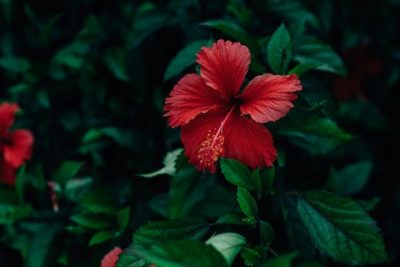 Hibiscus is a tropical plant with large, brightly colored flowers that come in stunning shades of red, pink, and yellow. The plant typically grows in an upright shrub with glossy green leaves to add tropical brightness to any garden or interior design. The hibiscus plant loves full sunlight but can tolerate some shade in hotter areas. They require well-draining soil and regular watering, but over-watering must be avoided to prevent the plant from developing root rot.
Hibiscus is a tropical plant with large, brightly colored flowers that come in stunning shades of red, pink, and yellow. The plant typically grows in an upright shrub with glossy green leaves to add tropical brightness to any garden or interior design. The hibiscus plant loves full sunlight but can tolerate some shade in hotter areas. They require well-draining soil and regular watering, but over-watering must be avoided to prevent the plant from developing root rot.
Hibiscus blooms are short-lived, but the plant will typically continue to bloom for months. They should be pruned to encourage new growth and the formation of flowers continually. Hibiscus is low-maintenance and generally does not attract insects or diseases, but some measures need to be taken to manage pests appropriately.
Hibiscus is considered one of the world’s most popular flowering plants with significant cultural, artistic, and medicinal value worldwide. In addition to its stunning blooms, hibiscus is used to promote health and well-being, with tea made from its leaves and flowers traditionally used for medicinal purposes. Hibiscus is used widely in interior design, where its vibrant flowers make it an excellent focal point. Additionally, its ornamental versatility has ensured that hibiscus is a frequent guest in many different ceremonies, including weddings, funerals, and celebrations worldwide. Overall, hibiscus is an ideal tropical plant that can be uniquely versatile in any interior design or tropical garden.
Conclusion
Bali is home to some of the most stunning and exotic tropical plants in the world. By incorporating these native tropical plants into your garden, you can create a lush, tropical paradise that will bring joy and serenity to your life. Start planning your garden today with these top 10 native tropical plants and transform your garden into a stunning oasis. Remember that proper care and maintenance will help your plants thrive and make your garden even more beautiful.


